2022/2023 NCLEX-RN EXAM QUESTIONS AND ANSWERS (LATEST VERSION)
Document Content and Description Below
1. 1. Question Which action(s) should you delegate to the experienced nursing assistant when caring for a patient with a thrombotic stroke with residual left-sided weakness? Select all that apply. ... o A. Assist the patient to reposition every 2 hours. o B. Reapply pneumatic compression boots. o C. Remind the patient to perform active ROM. o D. Check extremities for redness and edema. Correct Answer: A, B, & C. The experienced nursing assistant would know how to reposition the patient and how to reapply compression boots and would remind the patient to perform activities he has been taught to perform. o Option D: Assessing for redness and swelling (signs of deep venous thrombosis {DVT}) requires additional education and is still appropriate to the professional nurse. 2. Question The patient who had a stroke needs to be fed. What instruction should you give to the nursing assistant who will feed the patient? o A. Position the patient sitting up in bed before you feed her. o B. Check the patient’s gag and swallowing reflexes. o C. Feed the patient quickly because there are three more waiting. o D. Suction the patient’s secretions between bites of food. Correct Answer: A. Position the patient sitting up in bed before you feed her. Positioning the patient in a sitting position decreases the risk of aspiration. o Option B: The nursing assistant is not trained to assess gag or swallowing reflexes. o Option C: The patient should not be rushed during feeding. o Option D: A patient who needs to be suctioned between bites of food is not handling secretions and is at risk for aspiration. This patient should be assessed further before feeding. 3. Question You have just admitted a patient with bacterial meningitis to the medical-surgical unit. The patient complains of a severe headache with photophobia and has a temperature of 102.60 F orally. Which collaborative intervention must be accomplished first? o A. Administer codeine 15 mg orally for the patient’s headache. o B. Infuse ceftriaxone (Rocephin) 2000 mg IV to treat the infection. o C. Give acetaminophen (Tylenol) 650 mg orally to reduce the fever. o D. Give furosemide (Lasix) 40 mg IV to decrease intracranial pressure. Correct Answer: B. Infuse ceftriaxone (Rocephin) 2000 mg IV to treat the infection. [Show More]
Last updated: 2 years ago
Preview 1 out of 55 pages

Buy this document to get the full access instantly
Instant Download Access after purchase
Buy NowInstant download
We Accept:

Reviews( 0 )
$10.00
Can't find what you want? Try our AI powered Search
Document information
Connected school, study & course
About the document
Uploaded On
Sep 03, 2022
Number of pages
55
Written in
Additional information
This document has been written for:
Uploaded
Sep 03, 2022
Downloads
0
Views
150

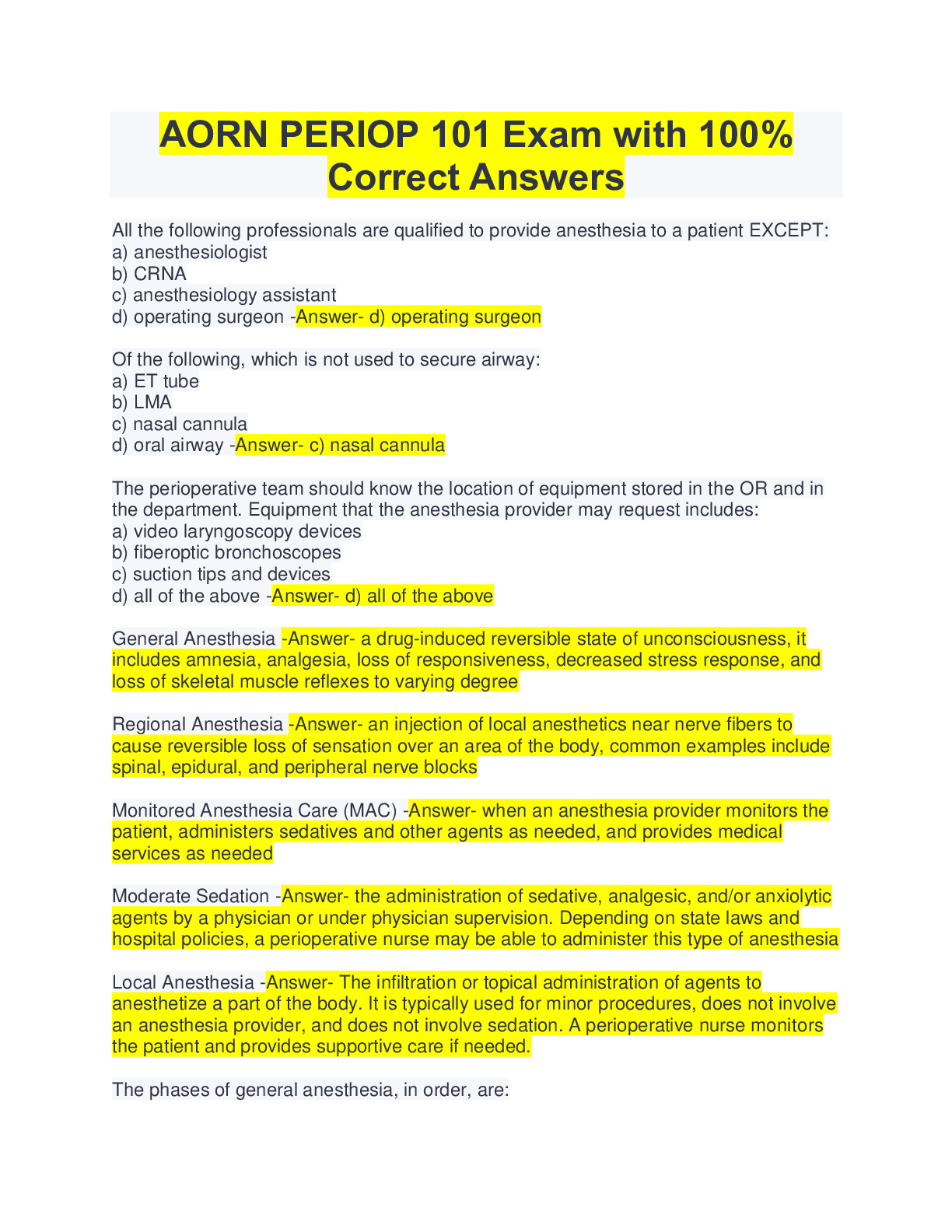







.png)
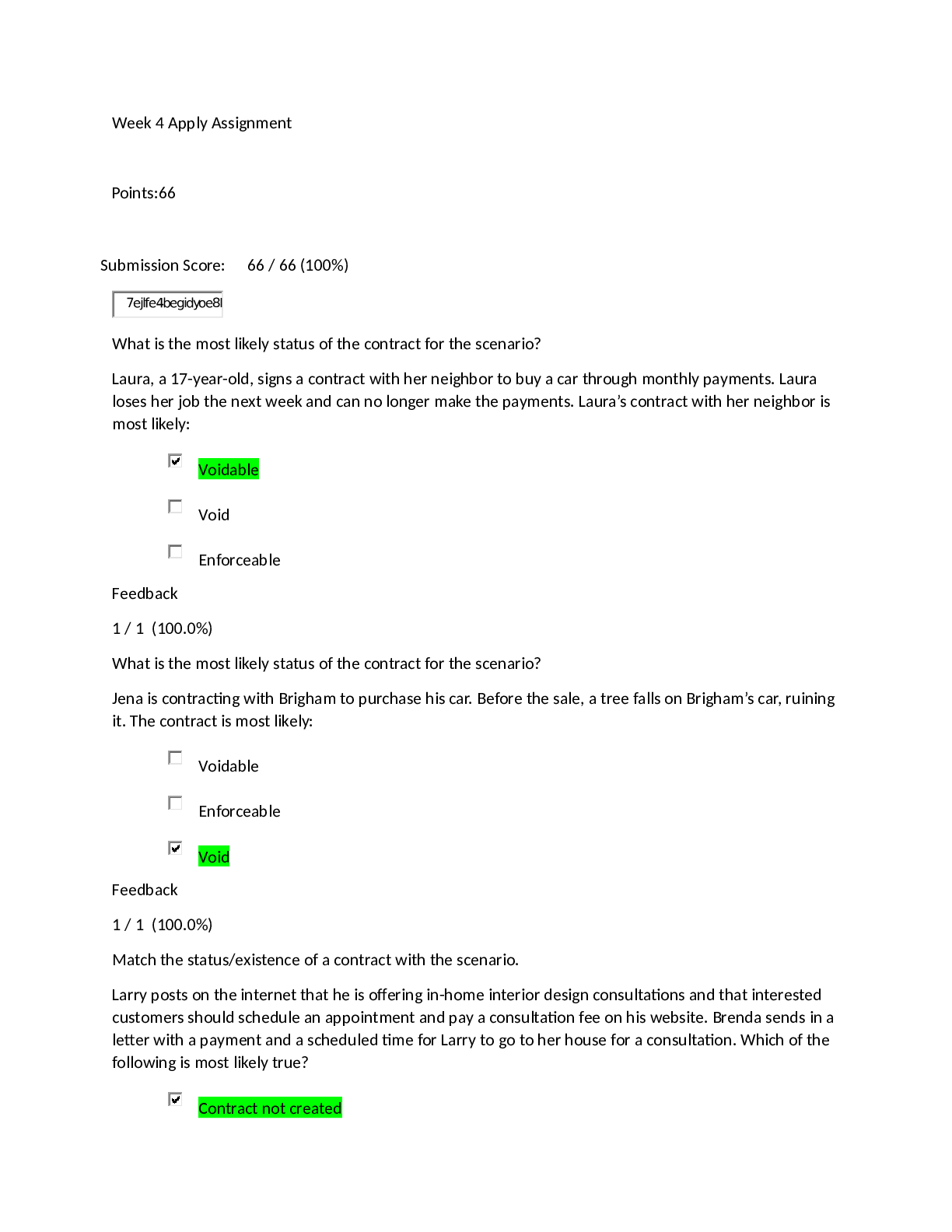







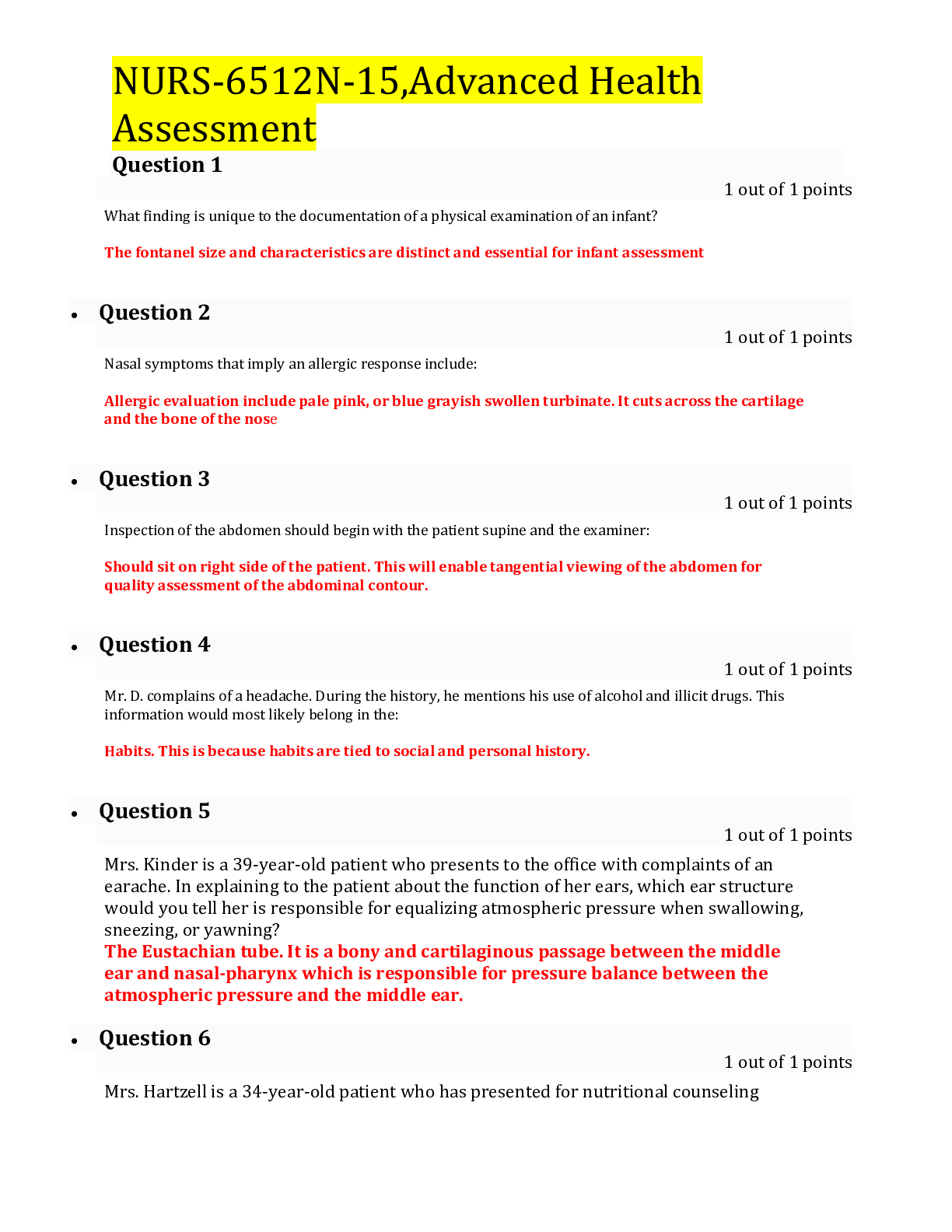
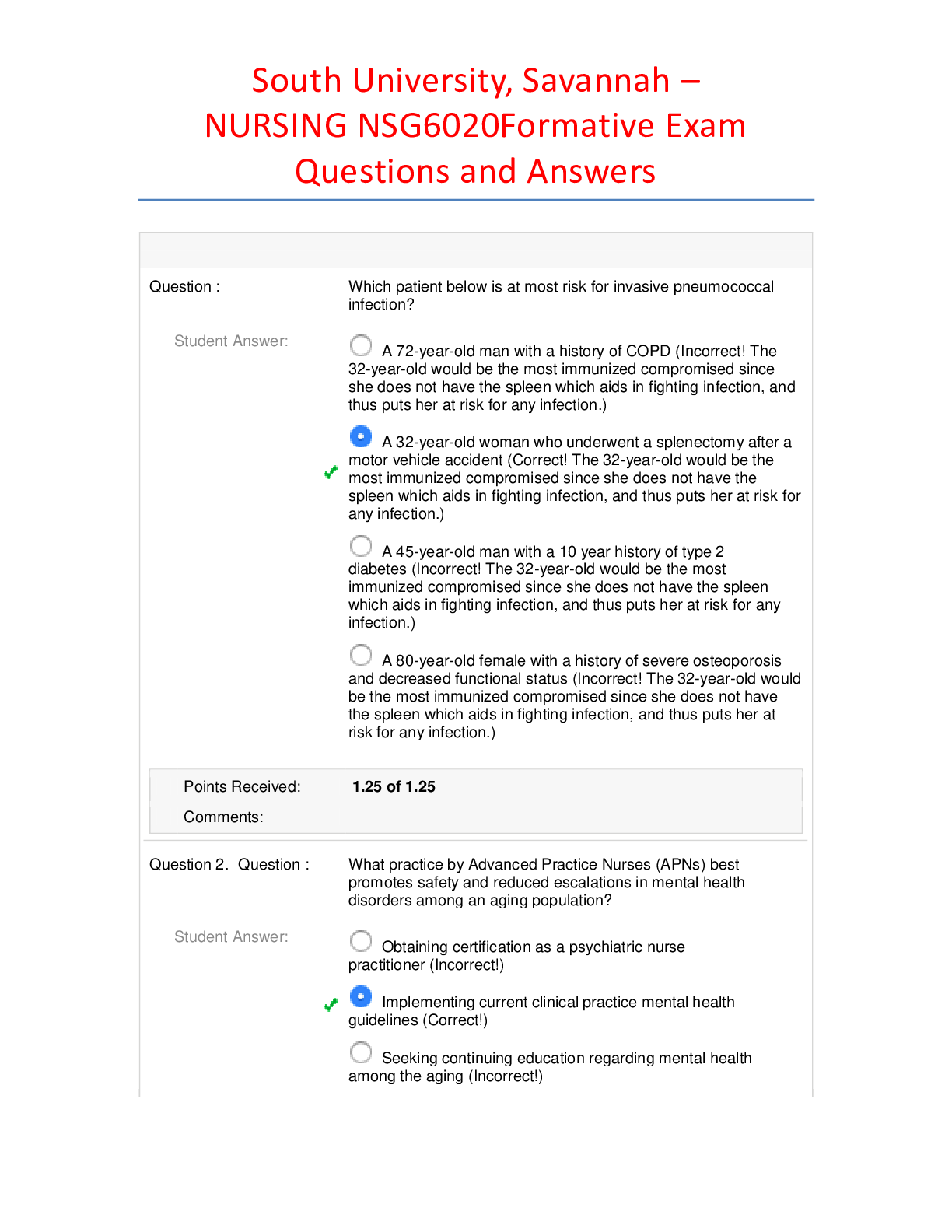


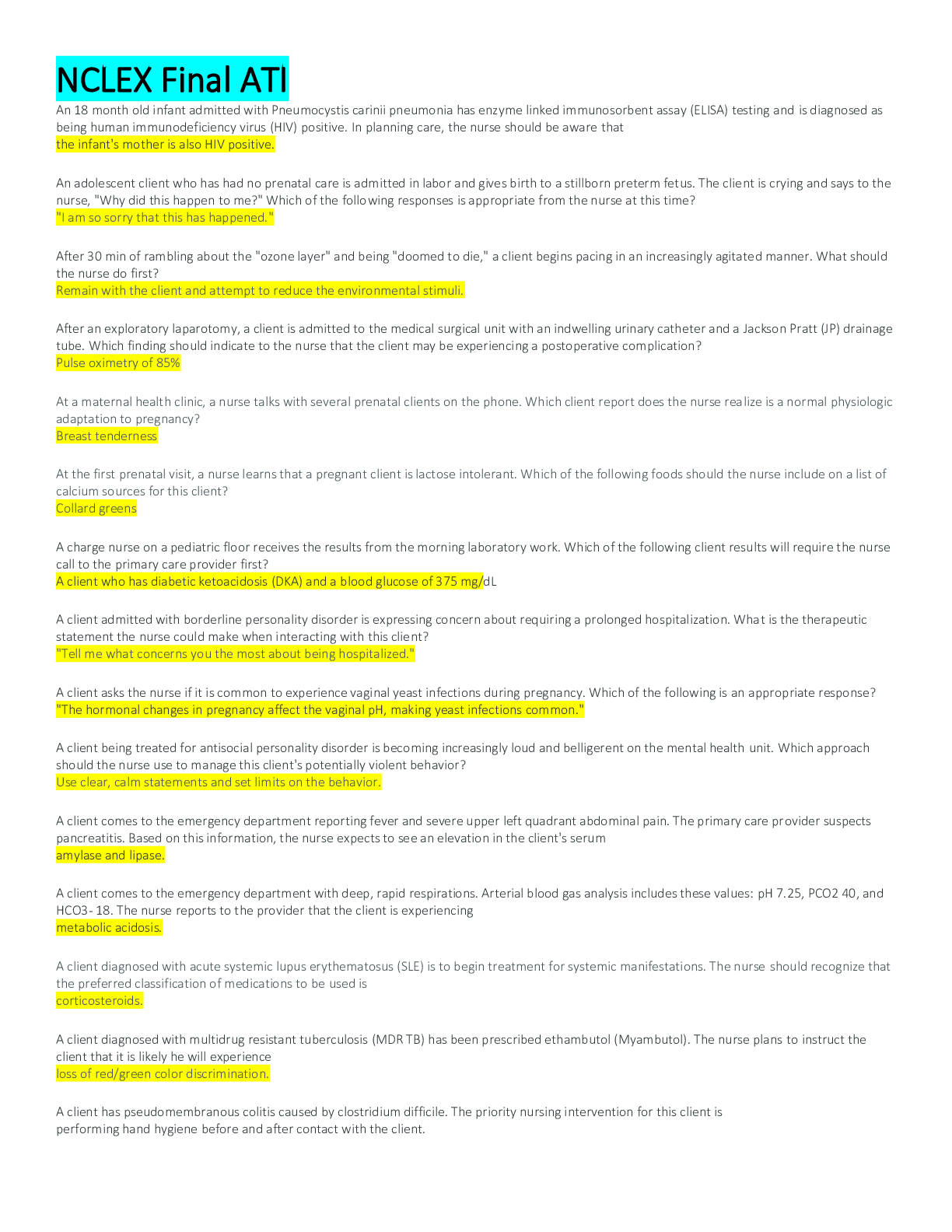
.png)

